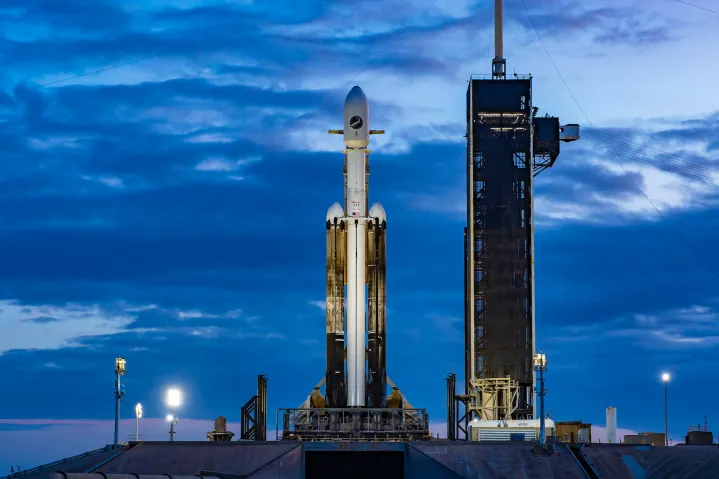
SpaceX had been hoping to launch its powerful Falcon Heavy rocket carrying an uncrewed space plane for the U.S. Space Force on Sunday, but poor weather conditions at the Kennedy Space Center in Florida forced it to shift the targeted date to Monday.
Then, on Monday, as the evening launch window approached, SpaceX said it was standing down due to a “side issue” on the ground and would instead target Tuesday night.
But early on Tuesday afternoon, the commercial spaceflight company announced it would not be launching later in the day and is now targeting Wednesday, saying only that the extra time will “allow teams to complete system checkouts ahead of liftoff.”
However, with SpaceX adding that Wednesday’s weather conditions at the Kennedy Space Center are only 40% favorable for launch, there’s a good chance that it will be forced to delay yet again.
When the USSF-52 mission finally gets underway, the Falcon Heavy will deploy the U.S. Space Force’s experimental X-37B Orbital Test Vehicle on its seventh flight, during which it’ll complete a variety of tests.
It’s not clear how long the plane will stay in orbit, but its longest mission to date, which ended in November 2022, lasted 908 days before the aircraft returned to U.S. soil.
The X-37B vehicle looks similar to NASA’s now-decommissioned space shuttle but is about a quarter the length at 29 feet (8.8 meters). And like the space shuttle, it also makes a runway landing at the end of a mission, though in this case, using autonomous systems.
When the Falcon Heavy does get off the ground, it will mark the rocket’s ninth flight since its debut mission in 2018 and the first since October when it deployed NASA’s Psyche spacecraft to study a metal asteroid located between Mars and Jupiter.
With its three boosters generating around 5.5 million pounds of thrust, the Falcon Heavy promises to put on a spectacular show when its engines fire up, hopefully in the coming days. Those attending the site in person or watching the live stream can also witness the return of the rocket’s two side boosters, which will make an upright landing at the launch site a few minutes after launch.
Editors' Recommendations
- SpaceX’s Falcon 9 rocket just completed a milestone mission
- SpaceX all set for a record-breaking rocket launch on Friday
- SpaceX shares stunning night shot of its Super Heavy booster
- SpaceX already has a date in mind for next Starship launch
- Take a high-speed ride on SpaceX’s emergency escape chute


